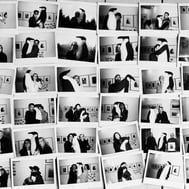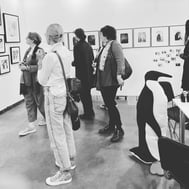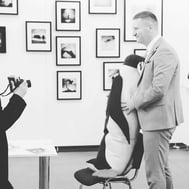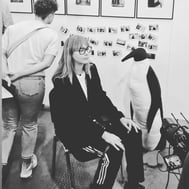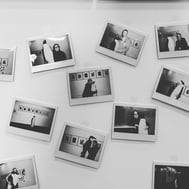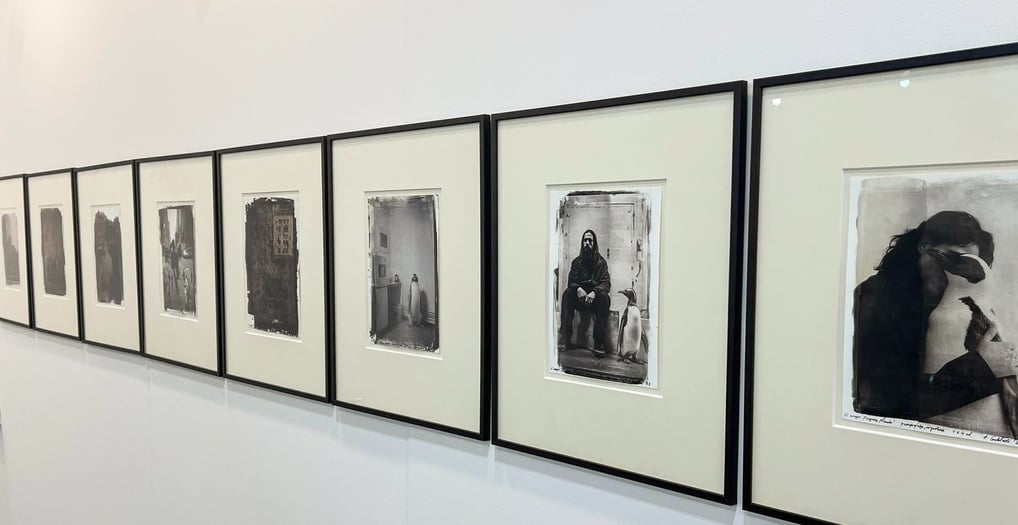Ray Bradbury in his A Sound of Thunder (1952) described time travelers who stepped on a butterfly and, by doing this, subtly changed the world. In my version of that story, penguins become the dominant species on the planet. These penguins are far from being conquerors, they simply live with humans. One would say that nothing has fundamentally changed. It could well be that the air has become somewhat fresher, perhaps the climate crisis has become less severe, and the species have stayed more diverse. Otherwise, life on the Earth continued pretty much as before, except that the habit of hugging a penguin has become a tradition. But there are some secrets: Who knows what those penguins actually do when they whisper to humans who are hugging them? We cannot know this, but the penguin whisper could be the reason for the peaceful coexistence of humans and non-humans. This is probably why the monuments are no longer for conquerors or rulers; they are for penguins.
Promtography helps us to create new and different versions of the world by persuading people with its photographic aesthetic. As Susan Sontag noted, people perceive photography as a representation of reality. Promtography represents possibilities and variations that exist in our collective imagination, which gets unleashed by creative uses of this technology.
This penguin story seeks to reaffirm the beauty of our world and to remind us that small changes can have a big impact. Let us embrace the penguin, and let us do our bit, however small it can be.
I work in the aesthetic of black and white photography. I believe that this aesthetic has the capacity to convey the "real" world without the noise of excessive information. In my work, I use personal photo albums to provide image-to-image prompts, which I then combine with the images that I create using text-to-image prompts. To do this I use the Midjourney tool. I also occasionally use Dalie 2, Adobe Firefly, and Photoshop for editing.
In my practice I combine analogue processes (pre-photography) with digital and generated image negatives (post-photography). By using this mixed technique, I not only deconstruct the aesthetic code of our culture, but I also seek to give material bodies to digital souls. The process is as important for me as the outcome. Working with the analogue processes requires expert knowledge and concentration: I associate this with religious rituals and the forms of magic. The excitement of waiting for an image to develop reminds me of the waiting for a miracle. Indeed, many photographers working with the analogue methods noted that the very experience of the analogue process can be compared with experiencing transcendence.
Contemporary Art Fair ARTVILNIUS’2023
Planet of the Penguins
Represented by: Vilniaus fotografijos meno centras 7:14
Photography, promtography, mixed media, argyrotype, toned cyanotype.
Works from this project were featured on the covers of four Lithuanian cultural publications (see photo gallery).
The exhibition was enhanced with a performative action. Visitors of the art fair and other artists were invited to hug an artificial penguin that was created in collaboration with fashion designer Egle Žiemyte. The penguin hugs were documented using a Fuji Instax. The penguin hugs were accompanied by discussions about the conflict between man and nature, the attempt to restore connection, and reflections on climate change. More than one Lithuanian celebrity, as well as a politician (for example, the then Minister of Culture Simonas Kairys), embraced the penguin.
